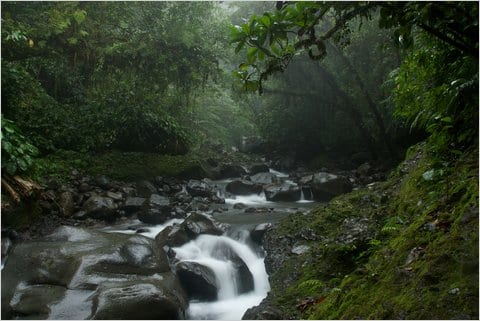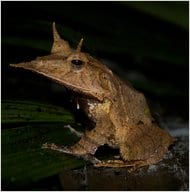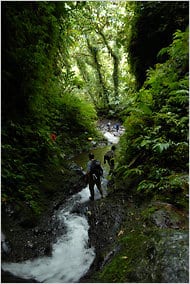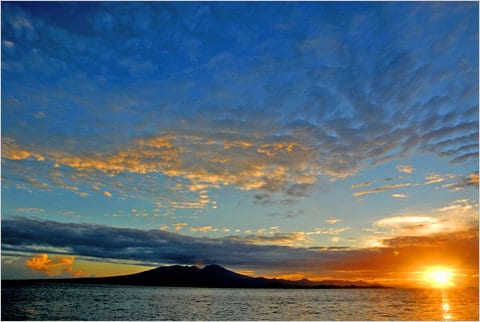
Photo by Fred Oliver
We left Kolombangara on our first clear morning. By midday, gushing rain transformed the lower-elevation forests into torrents of braided streams that formed and reticulated as we wandered, obliterating all signs of our passage. What little there was of a trail was gone, turned streambed. So we just went down, followed water, became it in the steady downpour.
And then it stopped. Rivulets disappeared like snakes into grass. The tall hill forest,resplendent in the aftermath of rain, was aglow in emerald light. A mixture of birdsong and the chirp and gurgle of lower-elevation frogs heralded our return to the familiar. The pathway of our descent was absolutely stunning. Yet there was an ache in many of us, like leaving a lover or a child, not knowing when, if ever, you will see them again.

In a way, everything from here is easy, known. Lots of long hours shaking out and drying gear, meeting with partners and government officials, collating notes, packing and organizing specimens and samples. Somewhat exhausting, but all the risk and sketchiness diminished, our lists gently blown away in the soft lagoon breeze.
Once back, we will have the task of curating collections and writing up descriptions of localities and itineraries, reporting initial results and beginning more sophisticated analyses of the data collected. And there is the wonderful prospect of comparing material and notes from this trip with collections at the American Museum of Natural History in New York, which houses the most extensive collections of Solomon material in the world.
As a young boy in New York, I dreamed of working at the museum — not knowing what that would mean, just knowing the magnetism the place held for me, the power of illustrating the diversity of life in ways at once titillating, inspiring and accessible to a child walking in off the streets, ready for life to change.
Like a library filled with books whose stories are rewritten and multiplied with every new addition, existing museum collections enable us to place our work in geographic and temporal contexts impossible to attain in the field, even over many years. Each drawer of specimens holds many lifetimes of work, neatly filed and collated by geography, time, family, species, all growing in value with each expedition arriving back to embellish and reweave the stories held within.
That said, the prospect of poring through museum collections is exciting, but it is just work.
Not to diminish what is the unglamorous bulk of scientific work, but it will get done and our research will prosper for it.

What is less certain is the fate of these last wild island places and the people who areentangled within them. Despite their famed scientific influence, islands are sadly underrepresented in global conservation priorities. In part, this is due to a tyranny of size — even the largest archipelagos, in their entirety, are a mere fraction of many continental parks or protected areas. Islands have also been misunderstood by science and society, with the pendulum of interest swinging over time between paradise found and backwater. Islands are more than this.
The work we have been doing on this trip is part of a larger body of work carried out by an exceptional community of island biologists. Our sense of the global importance of islands is shifting. Research using molecular biology, and our growing ability to analyze at scale, presents a picture of islands not only as bizarre evolutionary backwaters, but also engines of diversification that affect global patterns of diversity.
In the face of this re-envisioned island biology, there are numerous efforts to partner with island people to both conserve and restore island systems. These island initiatives are a bellwether of global conservation efforts, and this story is largely untold.
On Kolombangara, partnership between indigenous landholders and a sustainable plantation timber company has spawned the seed of a customary biodiversity reserve system for the Solomons. And this inspired our expedition as much as science. Opportunities to support unbroken indigenous interest in a place through biology are vanishingly rare.

In places like Kolombangara, science has become a kind of poetry of place — a bridge between we who are discovering a wider world, made but still being made, and those who are rediscovering the lost essence of a birthplace. Natural history provides a mutual language legitimizing an indigenous history and voice that has been muted. Our partnership with customary landholders on Kolombangara is a commitment to leveraging science to improve stewardship of everything that is wild and unique about the island.
